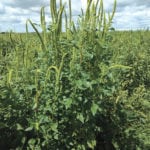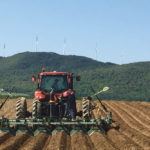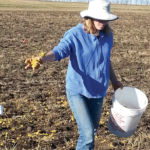
Tag Archives North Dakota State University

On the lookout for Public Enemy No. 1
North Dakota asks farmers to watch for Palmer amaranth in their fields

Controlling cattle pests vital
Left untreated, pests can cause significant loss in production

Fungicide issues worse in U.S.
Boscalid and other early blight fungicides are facing down resistance in the U.S., but the issue hasn’t quite reached fever pitch in Manitoba

Temperature can give insight on water mould risk in soybeans
Soil temperature and disease pressure combine when targeting early-season water mould problems

Get scouting, soybean aphids showing up in fields
When populations hit 250 and are still rising consider applying an insecticide, but don’t forget to take beneficial insects into account. There’s an app for that

U.S. study questions neonics for soybean aphid control
The effectiveness of the insecticide has diminished by the time the plants are at the stage when the insects arrive

Fumigation a potential solution for ‘tired potato land’
Not all land will show an effect however, so producers need to consider the strategy carefully

NDSU scientists study distillers grains as fertilizer
Wet distillers grains and condensed distillers solubles increased corn and spring wheat yields

Big Iron 2016 show set to kick off
The 36th annual event will celebrate agriculture and showcase innovation

Soil test right after the combine
The tradition has been to sample for soil nutrients later in the fall, but there are compelling reasons to go sooner than later


